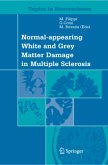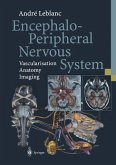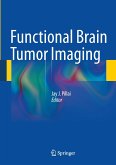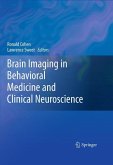The recent advances in neuroimaging techniques, particularly magnetic re- nance (MR), have greatly improved our knowledge of brain anatomy and related brain function. Morphological and functional investigations of the brain using high-definition MR have made detailed study of the brain possible and provided new data on anatomo-functional correlations. These studies have fuelled the interest in central nervous system imaging by clinicians (n- roradiologists, neurosurgeons, neurologists, neurophysiologists, and psych- trists) as well as biophysicists and bioengineers, who are at work on new and ever more sophisticated acquisition and processing techniques to continue to improve the potential of brain imaging methods. The possibility of obtaining high-definition MR images using a 3.0-T m- net prompted us, despite the broad existing literature, to conceive an atlas illustrating in a simple and effective way the anatomy of the brain and correl- ed functions. Following an introductory chapter by Prof. Pierre Rabischong, the atlas is divided into a morphological and a functional imaging section. The morphological atlas includes 3D surface images, axial, coronal, and sagittal scans acquired with high-definition T2 fast spin echo (FSE) sequences, and standard and inverted-contrast images. The MR scans are shown side by side with the corresponding anatomical brain sections, provided by Prof. Henri Duvernoy, for more effective comparison. The anatomical nomenclature adopted for both the MR and the anatomical images is listed in an jacket flap for easier consultation.
From the reviews:
"This ia a high quality publication - paper, images and the use of colour in fMRI images is exemplary."....."As an atlas it is useful and very good value for the price. and the written chapter will never fail to amuse. Information and a laugh - now how often do you find that in a radiological text?"
RAD Magazine, July 2006, pp. 32
"This book presents correlations between morphology and functional anatomy of the brain, as an atlas ... . The authors have achieved a nice and clear synopsis of the actual knowledge and possibilities of functional imaging of the anatomy of the brain. This book will be an interesting basis for neurologists, neurosurgeons, radiologists, physiologists interested in neurophysiology, but also psychiatrists ... and it will also be useful for showing to the students the relevance of the anatomy of the central nervous system." (AC Tobenas, Surgical and Radiologic Anatomy, Vol. 29 (2), 2007)
"A resource thatanswers the call of functional neuroradiology training. ... The material is directed at radiologists, neuroradiologists, neurosurgeons, neurologists, and other clinical neuroscientists. The Atlas is intended as a reference and teaching tool for medical students and residents, using cadaveric specimens to reinforce anatomy ... . provides an efficient and useful way to identify sulcal and gyral landmarks that one may encounter in day-to-day clinical practice. ... All in all, the Atlas is a useful addition to the neuroradiologist's library of brain anatomy texts." (American Journal of Neuroradiology, Vol. 28, August, 2007)
"This ia a high quality publication - paper, images and the use of colour in fMRI images is exemplary."....."As an atlas it is useful and very good value for the price. and the written chapter will never fail to amuse. Information and a laugh - now how often do you find that in a radiological text?"
RAD Magazine, July 2006, pp. 32
"This book presents correlations between morphology and functional anatomy of the brain, as an atlas ... . The authors have achieved a nice and clear synopsis of the actual knowledge and possibilities of functional imaging of the anatomy of the brain. This book will be an interesting basis for neurologists, neurosurgeons, radiologists, physiologists interested in neurophysiology, but also psychiatrists ... and it will also be useful for showing to the students the relevance of the anatomy of the central nervous system." (AC Tobenas, Surgical and Radiologic Anatomy, Vol. 29 (2), 2007)
"A resource thatanswers the call of functional neuroradiology training. ... The material is directed at radiologists, neuroradiologists, neurosurgeons, neurologists, and other clinical neuroscientists. The Atlas is intended as a reference and teaching tool for medical students and residents, using cadaveric specimens to reinforce anatomy ... . provides an efficient and useful way to identify sulcal and gyral landmarks that one may encounter in day-to-day clinical practice. ... All in all, the Atlas is a useful addition to the neuroradiologist's library of brain anatomy texts." (American Journal of Neuroradiology, Vol. 28, August, 2007)








